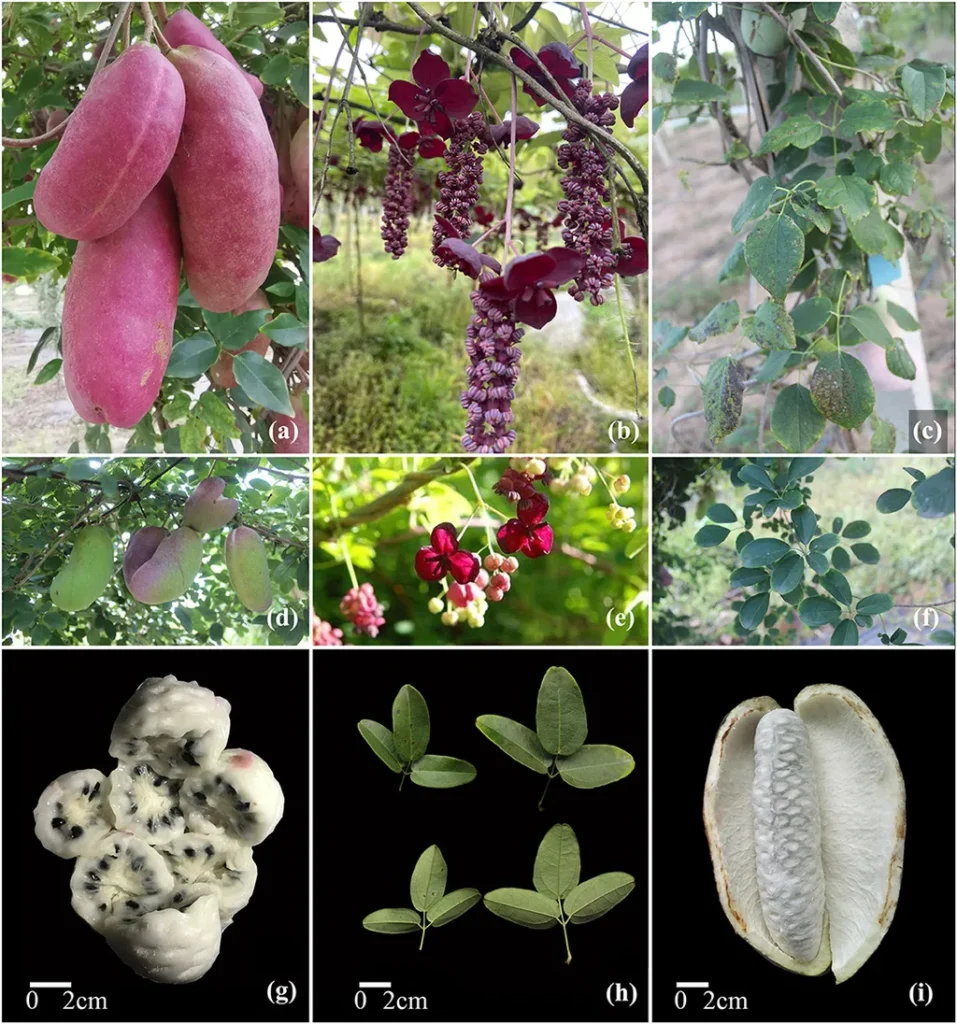In the world of horticulture and agriculture, the color of a fruit’s pericarp, or outer layer, can significantly influence consumer preferences and market value. A recent study published in *BMC Plant Biology* (Chinese name: 生物学与生物技术) has shed new light on the molecular mechanisms behind pericarp coloration in Akebia trifoliata, a plant known for its vibrant and varied fruit colors. The research, led by Yong Huang from the Agriculture Forestry Ecology College at Shaoyang University, identifies a key gene that could revolutionize breeding programs and commercial cultivation of this valuable crop.
Akebia trifoliata, commonly known as chocolate vine, is prized for its edible fruits, which range in color from white to pink to deep purple. These colors are primarily due to the presence of anthocyanins, a group of pigments responsible for the red, purple, and blue hues in many fruits and vegetables. Understanding the genetic basis of anthocyanin production is crucial for breeders aiming to develop new varieties with desirable traits.
Huang and his team compared three varieties of A. trifoliata: Luoyang white pericarp (LW), Guida No.3 pink pericarp (GP), and Za No.30 purple pericarp (ZP). By analyzing the pigment content and performing RNA-Seq analysis, they identified 13,807 differentially expressed genes (DEGs) between the varieties. “The KEGG enrichment analysis revealed that phenylalanine and flavonoid biosynthesis were significantly enriched, pointing us towards the key pathways involved in anthocyanin production,” Huang explained.
One of the most significant findings was the identification of the gene AtrANS, which plays a vital role in anthocyanin biosynthesis. Using weighted gene coexpression network analysis (WGCNA), the researchers found that AtrANS was highly correlated with anthocyanin production. To confirm its role, they conducted exogenous overexpression and virus-induced gene silencing (VIGS) experiments. Overexpression of AtrANS increased anthocyanin accumulation and the expression of regulatory genes, while VIGS resulted in reduced anthocyanin levels.
“This study not only reveals the transcriptional events during pericarp coloration in A. trifoliata but also highlights the crucial role of AtrANS in regulating anthocyanin biosynthesis,” Huang stated. The implications of this research are far-reaching, particularly for the horticulture industry. By understanding and manipulating the genes involved in anthocyanin production, breeders can develop new varieties with enhanced coloration, potentially increasing their market appeal and value.
The commercial impact of this research extends beyond A. trifoliata. Anthocyanins are not only responsible for the vibrant colors in fruits but also have numerous health benefits, including antioxidant and anti-inflammatory properties. As consumer demand for healthy and visually appealing produce grows, the ability to control and enhance anthocyanin production becomes increasingly valuable.
Future developments in this field could see the application of gene-editing technologies, such as CRISPR-Cas9, to precisely modify genes like AtrANS in a variety of crops. This could lead to the development of new varieties with improved coloration, nutritional content, and disease resistance, ultimately benefiting both producers and consumers.
In conclusion, the research led by Yong Huang and his team at Shaoyang University represents a significant step forward in our understanding of pericarp coloration in A. trifoliata. Published in *BMC Plant Biology*, this study not only advances our knowledge of the genetic basis of anthocyanin production but also opens up new possibilities for the horticulture and agriculture industries. As we continue to unravel the complexities of plant genetics, the potential for innovation and improvement in crop breeding is immense.

